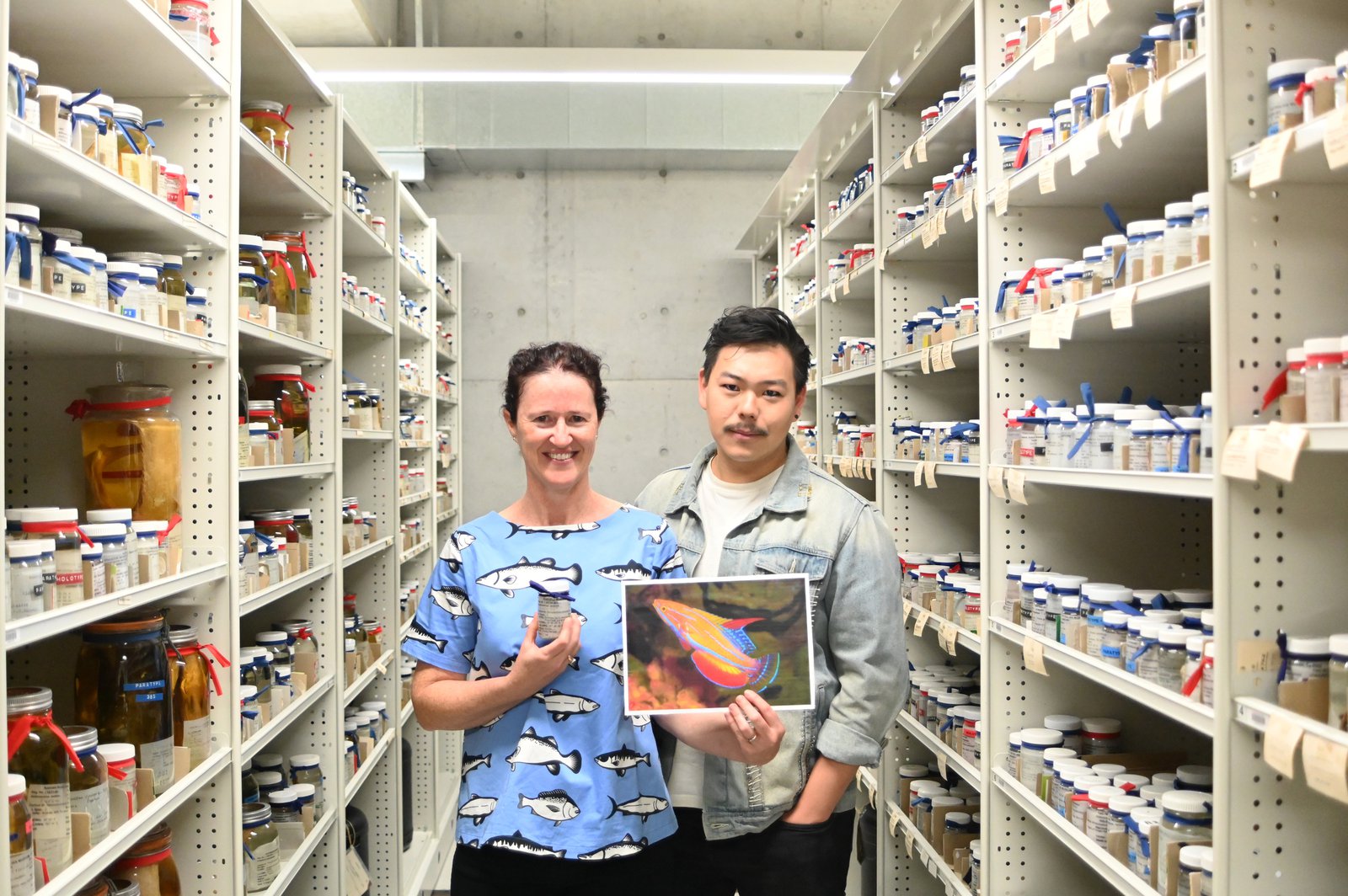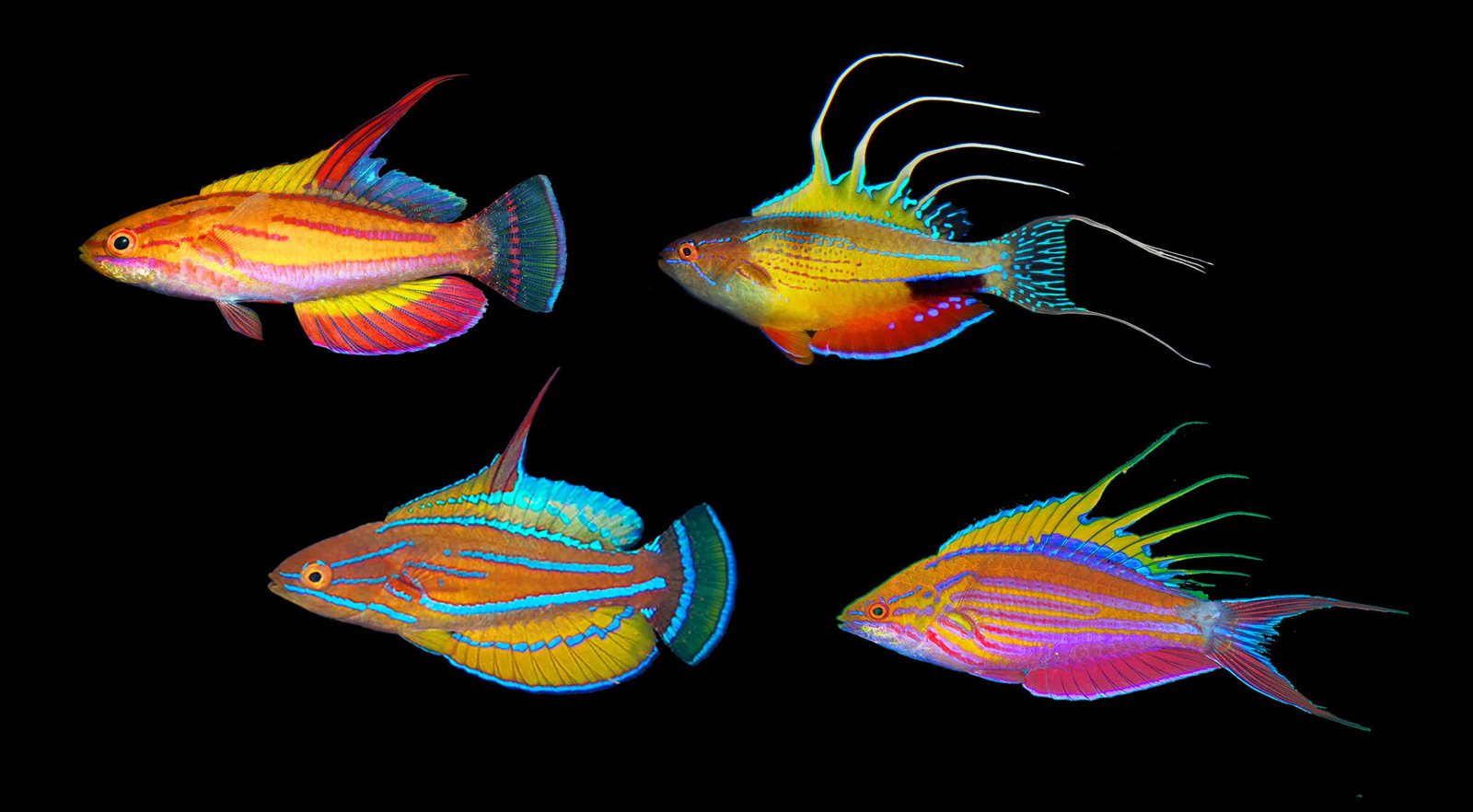New to science: A fishy tale uncovered
15 September, 2023, Sydney: Today, a new species of fish from the Australian Museum (AM) fish collection has been identified and described by Australian scientists, AM Chadwick Biodiversity Research Fellow, Dr Yi-Kai Tea and researcher, Fenton Walsh.
The discovery of the new species, Paracheilinus amanda, comes as part of the most comprehensive review of Australia’s flasher wrasse by Dr Tea and Fenton, which has now been published in Ichthyology & Herpetology. The study is borne through exhaustive examination of specimens housed not only within the Australian Museum, but of fishes housed in every state museum across Australia.

© Kiyoshi Endoh
The new species is named in recognition of Amanda Hay, the AM's Ichthyology Collection Manager, who has over 25 years of ichthyological and collections experience. Paracheilinus amanda belongs to a group of dazzling coral reef fishes known as flasher wrasses. Amanda’s flasher wrasse is endemic to the Great Barrier Reef and Coral Sea, and is found nowhere else in the world.
Notable for their captivating colours and stunning courtship displays, these small brightly coloured wrasses are some of the most spectacular fishes to be found on coral reefs. Their true beauty however is best appreciated several hours before sunset, where males erupt in dizzying acts of courtship that includes rapid swimming, fin flaring, and displays of iridescent neon colours.
Dr Tea said it was particularly fitting to name the wrasse after Hay, who has spent nearly three decades researching fishes of Australia and managing the AM’s Ichthyology collection - the fourth largest in the world with significant holdings of fish type specimens from both the Australian region and many other parts of the world.
Hay said it was an unexpected delight to have such an astonishingly beautiful fish named in her honour.
“To have my name become part of the vocabulary of natural history is an immense honour. It means a lot to me, my family and colleagues,” Hay said.

© Australian Museum
The discovery of Paracheilinus amanda came about when Dr Tea took a deep dive into fish collections across Australia as part of his study on flasher wrasses. The flasher wrasses are found across the Indo-Australian archipelago, and so it comes as a surprise that, in spite of Australia’s close proximity to this region, very little is known about the diversity of flasher wrasses in Australian territories. The discovery of Amanda’s flasher wrasse is among several notable new discoveries for Australia, including the discovery of Nursalim’s Flasher Wrasse in the Northern Territory, a species previously known only from the Bird’s Head Peninsula of West Papua, nearly 1,200 km away.

© Kevin Kohen
As a taxonomist, Dr Tea said the discovery and identification is a critical step towards finding out about each species.
"Correct identification is paramount for scientific record keeping. In total, four species of Flasher Wrasses are known from Australia, only one of which has been accurately represented in previous checklists. We have barely scratched the surface of identifying fish species on our planet. I really want people to be excited by these glorious fishes, and their place on our earth,” Dr Tea added.
Chief Scientist and Director of the Australian Museum Research Institute, Professor Kris Helgen said museum collections enable taxonomists to describe and identify more species.
"The facilities of the Australian Museum Research Institute house tens of millions of natural sciences specimens, as well as cutting edge genetics and imaging laboratories. World leading science is being produced here. Natural history museums are much more than collections of static objects, they are living, dynamic resources which help understand the richness of life and earth and to identify and tackle environmental issues that are important to all of us,” Helgen said.
“During her long career, Amanda Hay has always passed on her knowledge to others. She has made an impact on young students and emerging scientists and has made a significant contribution to our understanding of fishes in Australia. This is a fitting tribute indeed,” Helgen added.

© Heok-Hui Tan, Kazuhiko Nishiyama, Kevin Kohen, and Mark Rosenstein.
This research by Dr Yi-Kai Tea has been supported by the Chadwick Biodiversity Research Fellowship, awarded to Yi-Kai Tea in 2022. Established in 2008 with thanks to a generous bequest from the late Clarence E. Chadwick, the Chadwich Biodiversity Research Fellowship provides opportunities for gifted young scientists to establish a career in biodiversity research.
Through his research, Amanda’s flasher wrasse joins a growing list of fish species that Dr Tea has discovered and helped name scientifically.
The Australian Museum Ichthyology Collection consists of both adult and larval fish specimens. It is most likely the largest in the Southern Hemisphere and is the fourth largest collection of Primary Type species in the world. The overall size of the collection is estimated to be approximately 200,000 lots made up of 750,00 adult and over 1,000,000 larval specimens. The collection, of which 100 percent has been digitised also consists of 2,500 type specimens dating back to the 1800’s, upon which the original scientific description of the relevant species was based.

